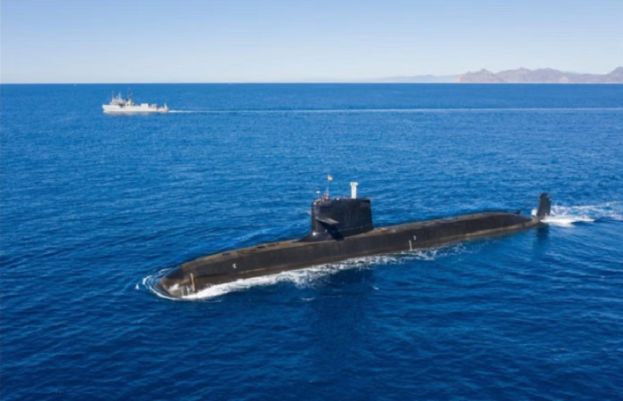The Pakistan Navy expects its first Chinese-designed attack submarine to enter service next year, Naval Chief Admiral Naveed Ashraf told Chinese state media, strengthening Beijing’s regional influence and its ability to counter India while projecting power toward the Middle East. Under a $5 billion deal, Islamabad will acquire eight Hangor-class submarines by 2028, a plan Admiral Ashraf described as “progressing smoothly” in an interview with the Global Times published Sunday. The submarines are expected to enhance Pakistan’s patrol capabilities in the North Arabian Sea and the Indian Ocean. The announcement comes after Pakistan’s Air Force used Chinese-made J-10 fighter jets in May to down several Indian aircraft, including French-made Rafales, surprising military analysts and raising questions about the effectiveness of Western platforms versus Chinese systems. According to the agreement, the first four diesel-electric submarines will be constructed in China, while the remaining four will be assembled in Pakistan, helping to boost the country’s technical expertise in submarine operations. Three of the submarines have already been launched from a shipyard on China’s Yangtze River in Hubei province. “Chinese-origin platforms and equipment have proven reliable, technologically advanced, and well-suited to the Pakistan Navy’s operational needs,” Admiral Ashraf said. He added that as modern warfare evolves, technologies such as unmanned systems, AI, and advanced electronic warfare are becoming increasingly important, and the Pakistan Navy is exploring further collaboration with China in these areas. Pakistan has historically been one of China’s top arms customers. Between 2020 and 2024, the country purchased over 60 percent of China’s exported weapons, according to the Stockholm International Peace Research Institute. In addition to arms sales, Beijing has invested heavily in the China-Pakistan Economic Corridor, a 3,000 km (1,864-mile) trade and transport route connecting China’s Xinjiang region to Pakistan’s deep-water port of Gwadar, further cementing strategic ties between the two nations. The China-Pakistan Economic Corridor, part of President Xi Jinping’s flagship ‘Belt and Road’ infrastructure initiative, aims to secure a route for the world’s largest energy importer to bring in supplies from the Middle East, bypassing the Straits of Malacca — a strategic chokepoint between Malaysia and Indonesia that could be blocked in wartime. The initiative also extends China’s sphere of influence toward Afghanistan and Iran and onto Central Asia, and effectively encircles India, given Beijing’s ties to the junta in Myanmar and good relations with Bangladesh. India currently operates three indigenously developed nuclear-powered submarines, along with three classes of diesel-electric attack submarines acquired or developed over decades with France, Germany, and Russia. “This cooperation (with China) goes beyond hardware; it reflects a shared strategic outlook, mutual trust, and a long-standing partnership,” Admiral Ashraf said and added “In the coming decade, we expect this relationship to grow, encompassing not only shipbuilding and training, but also enhanced interoperability, research, technology sharing and industrial collaboration.”
Pakistan plans 2026 launch for first attack submarine under $5B China deal

